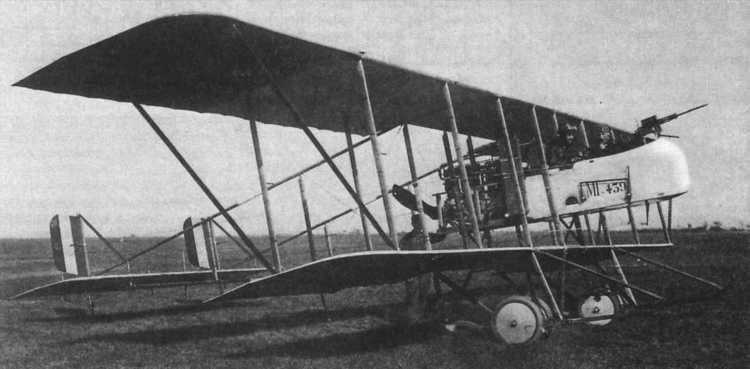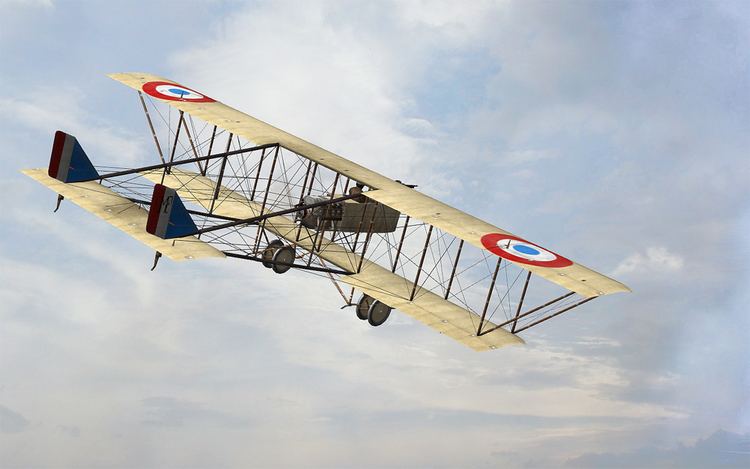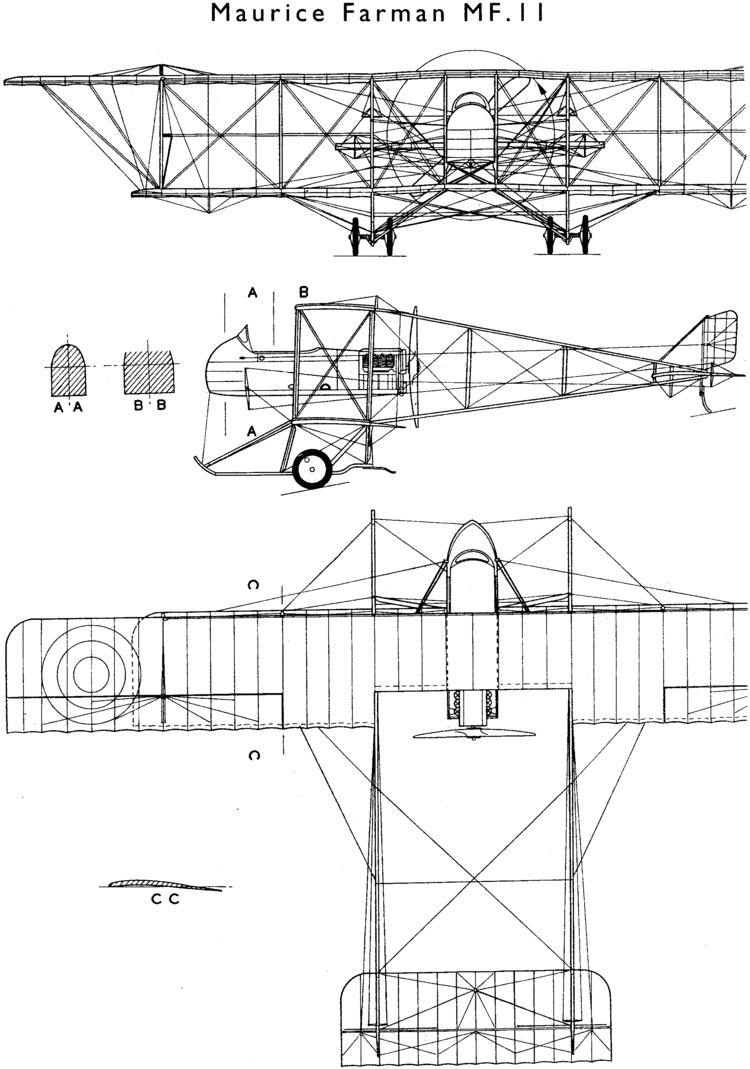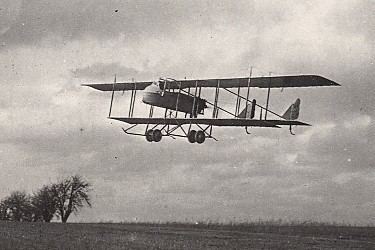Top speed 106 km/h Length 9.45 m | Wingspan 16 m First flight 1913 | |
 | ||
The Maurice Farman MF.11 Shorthorn is a French aircraft developed before World War I by the Farman Aviation Works. It was used as a reconnaissance and light bomber during the early part of World War I, later being relegated to training duties.
Contents
The Maurice Farman Shorthorn was the aircraft in which Biggles, Capt W.E. Johns' fictional character, first took to the air in "Biggles Learns To Fly".

Design and development

A pusher configuration unequal-span biplane like the earlier Farman MF.7, the MF.11 differed in lacking the forward-mounted elevator, the replacement of the biplane horizontal tail surfaces with a single surface with a pair of rudders mounted above it, and the mounting of the nacelle containing crew and engine in the gap between the two wings. The aircraft was also fitted with a machine gun for the observer, whose position was changed from the rear seat to the front in order to give a clear field of fire.

Its name derived from that of the MF.7 Longhorn, as it lacked the characteristic front-mounted elevator and elongated skids of its predecessor.
Operational history

On 6 September 1914 the first air-sea battle in history took place when a Japanese Farman MF.11 aircraft launched by the seaplane carrier Wakamiya unsuccessfully attacked SMS Kaiserin Elisabeth with bombs.
The MF.11 served in both the British and French air services on the Western Front in the early stages of the war. As a light bomber it flew the first bombing raid of the war when on 21 December 1914 an MF.11 of the Royal Naval Air Service attacked German artillery positions around Ostend, Belgium.
The MF.11 was withdrawn from front-line service on the Western Front in 1915, but continued to be used by the French in Macedonia and the Middle East, while the British also used it in the Dardanelles, and Africa. The Australian Flying Corps (AFC), provided with the MF.11 by the British Indian Army, operated it during the Mesopotamian campaign of 1915–16.
Italy's Società Italiana Aviazione, a Fiat company, licence-built a number of MF.11s under the designation SIA 5 from early 1915, fitted with a fixed forward machine gun and a 74.5 kW (100 hp) Fiat A.10 engine.
In 1916, the AFC also bought some MF.11s for training purposes.
Operators
Survivors
Specifications (MF.11)
Data from Encyclopedia of Military Aircraft
General characteristics
Performance
Armament
